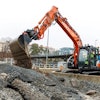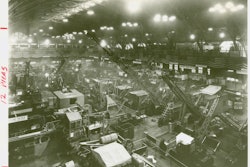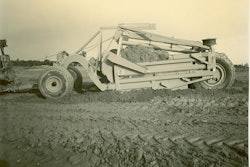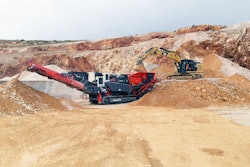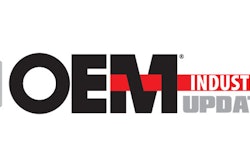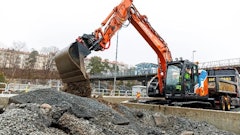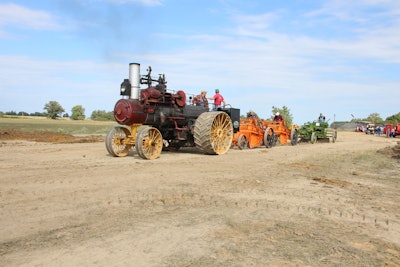
The mission of the Historical Construction Equipment Association (HCEA) is to preserve for public education the history of the construction, dredging and surface mining industries. One way this is accomplished is through its annual international conventions and old equipment exhibitions, in which attendees can see ancestors of today’s equipment in operation. The 2022 convention was held at the HCEA’s National Construction Equipment Museum in Bowling Green, Ohio. Thousands of attendees got to see many such machines, both from the museum’s 180-piece collection and another 150 from elsewhere.
Equipment Examples
Two of the greatest examples of machine evolution demonstrated involved museum equipment. The show featured major reassembly of the Terex 33-15 Titan 170-ton capacity end dump. The work was done entirely with donated labor and loaned equipment. Two local contractors provided crane and operator services. The museum’s collection also includes four older end dumps: a 1964 30-ton Mack; an 18-ton Euclid; a 10-ton Koehring Dumptor from the 1950s; and a 1928 Hughes-Keenan Iron Mule, a two-yard end dump built around a McCormick-Deering tractor chassis and power train.
The other example was the debut of the museum’s newly restored Manitowoc 3500 dragline and the first use of its new late 1960s Cat dirt spread—a D9G push loader, two 631B motor scrapers, and a 631B water wagon—all immaculately restored, donated and transported from New Jersey by the Mahan Collection Foundation. The spread was joined by tractor-drawn pull scrapers from the 1950s and two 1.5-yard Baker Maney D wheeled scrapers (see Image 1) from the late 1920s, examples of the earliest mechanized scrapers.
Restored Crawler Tractor
A third example, compared to the D9G’s hydraulic dozer, was a fully restored 1929 Caterpillar Sixty crawler tractor with one of the earliest dozer attachments in existence, a LaPlant-Choate blade that flips over and back blades when the tractor is reversed (see Image 2). Many other rare and unusual construction and agricultural machines, trucks, cars, engines and military vehicles were exhibited. The museum will host the show again next year, September 22 to September 24.
The Historical Construction Equipment Association (HCEA) is a 501(c )3 non-profit organization dedicated to preserving the history of the construction, dredging and surface mining equipment industries. With over 3,500 members in a dozen countries, our activities include operation of National Construction Equipment Museum and archives in Bowling Green, Ohio; publication of a quarterly magazine, Equipment Echoes, from which this text is adapted, and hosting an annual working exhibition of restored construction equipment. Individual memberships are $35.00 within the USA and Canada, and $55.00 US elsewhere. Our next International Convention and Old Equipment Exposition will be September 22-24, 2023, in Bowling Green, Ohio. We seek to develop relationships in the equipment manufacturing industry, and we offer a college scholarship for engineering students. Information is available at www.hcea.net, or by calling 419-352-5616 or e-mailing [email protected].
